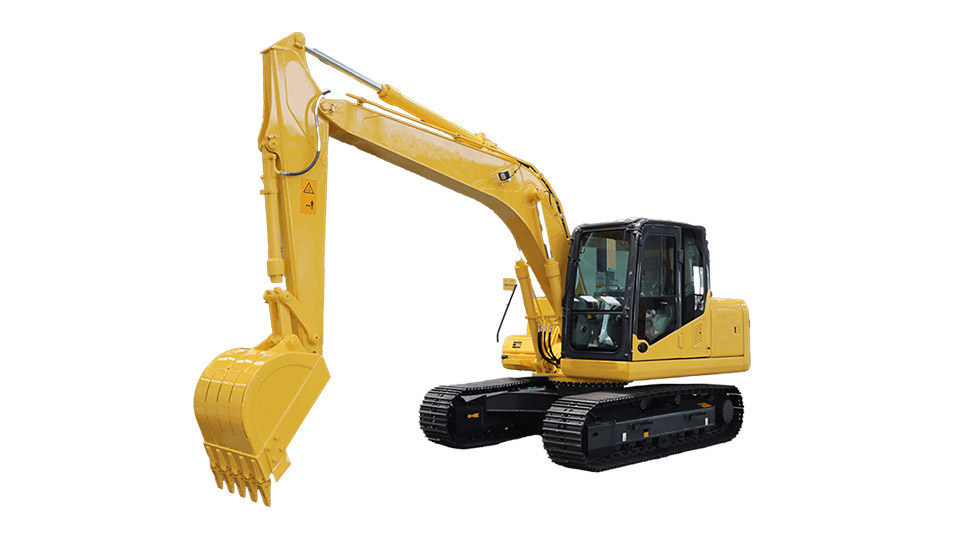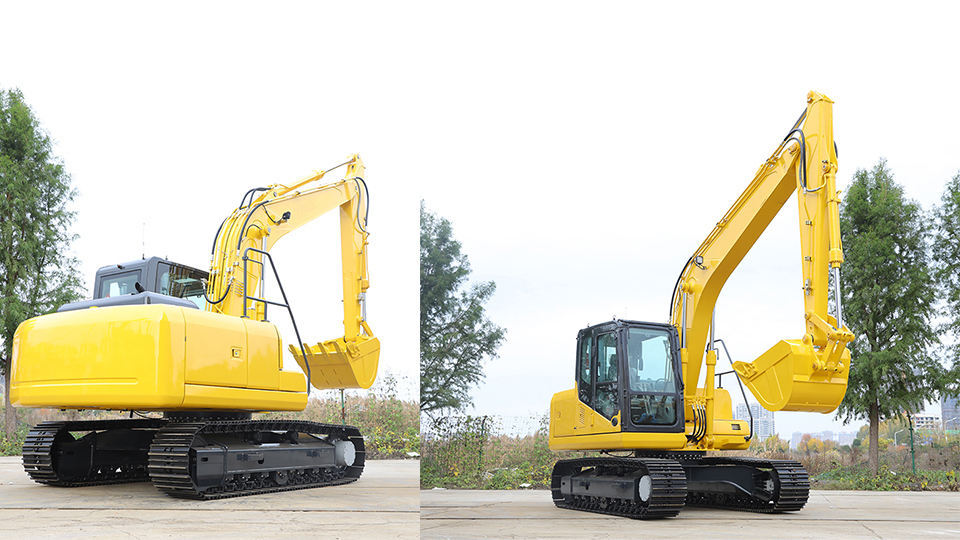The Nimble Diggers: Unpacking the Different Types of Lightweight Mini Excavators
Lightweight mini excavators have carved a significant niche in the construction, landscaping, and utility industries, offering a potent blend of power and maneuverability in a compact package. Their reduced weight, typically ranging from under one ton to around three tons, makes them ideal for accessing confined spaces, working on delicate surfaces, and easy transportation between job sites. However, within this lightweight category, a diverse range of designs and features cater to specific applications and operator preferences. Understanding these different types is crucial for selecting the right machine for the task at hand. This technical article will delve into the various classifications and characteristics of lightweight mini excavators, exploring their unique attributes and the applications they best serve.
Defining "Lightweight": Setting the Boundaries
Before categorizing, it's important to establish what constitutes a "lightweight" mini excavator. While there isn't a universally strict definition, these machines generally fall within the operating weight range of approximately 0.8 tons (1,760 lbs) to 3 tons (6,600 lbs). This weight class distinguishes them from heavier mini excavators that can weigh up to 10 tons or more. The focus on reduced weight often translates to a smaller physical footprint, lower ground pressure, and enhanced portability.
Categorization Based on Tail Swing:
One of the most significant differentiators among lightweight mini excavators is their tail swing configuration. This refers to the extent to which the rear of the excavator (housing the engine and counterweight) extends beyond the width of the tracks during a 360-degree rotation.
Zero Tail Swing (ZTS) or Minimal Tail Swing Excavators: This design is arguably the most popular in the lightweight category, particularly for urban and confined job sites. The counterweight and rear housing of a ZTS excavator remain within the width of the tracks during rotation.

Advantages:
Enhanced Safety in Confined Spaces: The primary benefit is the reduced risk of hitting obstacles or personnel when slewing in tight areas, making them ideal for working alongside walls, foundations, and other obstructions.
Improved Maneuverability: The compact swing radius allows for easier operation in congested environments.
Reduced Potential for Damage: Minimizes the risk of damaging the excavator itself or surrounding structures during rotation.
Considerations:
Potentially Lower Lift Capacity: In some ZTS models, the reduced counterweight might slightly impact the maximum lift capacity compared to conventional swing models of similar weight. However, advancements in design are constantly mitigating this.
Maintenance Access: In some early ZTS designs, access to rear-mounted components for maintenance could be slightly more restricted, though modern designs have largely addressed this.
Conventional Tail Swing Excavators: In this traditional design, the counterweight extends beyond the width of the tracks during rotation.
Advantages:
Potentially Higher Lift Capacity: The larger counterweight can often provide greater stability and lift capacity for a given machine weight.
Generally Lower Initial Cost: Historically, conventional tail swing models might have a slightly lower initial purchase price compared to ZTS models of similar size and power.
Easier Maintenance Access (Potentially): The more open rear design can sometimes offer easier access to engine and hydraulic components.
Considerations:
Limited Maneuverability in Tight Spaces: The extending tail swing poses a significant obstacle in confined work areas, requiring careful planning and operator awareness to avoid collisions.
Increased Risk of Damage: The protruding counterweight is more susceptible to hitting obstacles.
Less Suitable for Urban Environments: The swing radius can impede traffic flow or pose safety risks in busy urban settings.
Swing Boom Excavators: While not solely defined by tail swing, many lightweight mini excavators incorporate a swing boom feature. This allows the entire boom to be offset to the left or right of the machine's centerline.
Advantages:
Offset Digging Capability: Enables digging parallel to walls or obstacles without having to reposition the entire machine, significantly improving efficiency in tight spaces.
Improved Visibility: Can provide better visibility of the work area when digging in offset positions.
Enhanced Versatility: Facilitates working in a wider range of confined
Increased Complexity: The addition of the swing boom mechanism adds complexity to the machine's hydraulics and controls.
Potential Reduction in Breakout Force at Extreme Angles: The breakout force might be slightly reduced when the boom is fully offset.
Categorization Based on Undercarriage:
The undercarriage, consisting of the tracks and related components, also presents variations in lightweight mini excavators:
Fixed Undercarriage: This is the most common type, where the width of the tracks remains constant. The width is typically optimized for a balance between stability and maneuverability.
Retractable Undercarriage: Found primarily in the very lightweight (sub-2 ton) category, this feature allows the operator to hydraulically narrow the width of the tracks for passing through very narrow doorways, gates, or other tight openings. Once through the obstruction, the tracks can be widened again for increased stability during operation.
Advantages: Exceptional access to confined spaces.
Considerations: May offer slightly less stability at their narrowest setting and might have a lower overall operating weight and digging force compared to fixed undercarriage models in slightly higher weight classes.
Steel Tracks vs. Rubber Tracks: While not a primary categorization of "types" in terms of design, the track material significantly impacts the machine's suitability for different surfaces.
Rubber Tracks: Offer excellent traction on sensitive surfaces like lawns and asphalt, minimizing damage. They also provide a smoother ride and reduced noise. Predominant in the lightweight category.
Steel Tracks: Provide superior durability and traction on rough terrain, rocks, and demolition debris. Less common in the strictly "lightweight" category but can be found in some heavier models within this range. Some models offer interchangeable rubber and steel tracks.
Categorization Based on Power and Features:
Lightweight mini excavators also differ in their engine power and the features they offer:

Engine Horsepower: Ranges vary depending on the operating weight. Lighter models (under 1.5 tons) typically have engines in the 10-20 horsepower range, while larger lightweight models (2-3 tons) can range from 20-35 horsepower. Higher horsepower generally translates to greater digging force and hydraulic power for attachments.
Hydraulic Systems: Variations exist in the complexity and flow rate of the hydraulic systems, affecting the speed and power of the digging arm and attachments. Some models offer auxiliary hydraulic circuits as standard or optional equipment, allowing for the use of a wider range of attachments.
Operator Comfort and Controls: Modern lightweight mini excavators often feature ergonomically designed operator stations with comfortable seating, intuitive controls (often pilot controls for smoother and more precise operation), and good visibility. Some models offer enclosed cabs with heating and air conditioning for operator comfort in various weather conditions.
Technology Integration: Increasingly, lightweight mini excavators are incorporating features like digital displays, telematics systems for remote monitoring, and even electric or hybrid power options for reduced emissions and noise.
Applications Driving Specific Types:
The different types of lightweight mini excavators are often favored for specific applications:
Landscaping and Residential Work (Under 2 Tons): Retractable undercarriage and rubber tracks are highly valued for accessing backyards through narrow gates and minimizing damage to lawns and driveways. ZTS or minimal tail swing is also preferred for working close to property lines and structures.
Urban Construction and Utility Work (1.5-3 Tons): ZTS or minimal tail swing is crucial for operating safely in congested urban environments and around existing infrastructure. Swing booms enhance versatility for working around obstacles and alongside trenches.
Interior Demolition (Under 2 Tons): Compact dimensions, retractable undercarriage, and electric power (in some models) are essential for accessing and working within buildings with minimal disruption.
Rental Fleets (1.5-3 Tons): Durability, ease of operation, and versatility are key considerations, often leading to a mix of ZTS and conventional swing models with a range of standard features.
Leading Manufacturers and Their Offerings:
Numerous manufacturers offer a wide array of lightweight mini excavators. Some prominent brands include:
Kubota: Known for their reliable and compact machines, often featuring ZTS and good hydraulic performance.
Bobcat: Offers a range of lightweight models with various tail swing configurations and features, popular in rental markets.
Caterpillar (CAT): Provides durable and powerful mini excavators, including ZTS options.
Yanmar: Renowned for their compact and often zero tail swing designs.
John Deere: Offers lightweight models with a focus on operator comfort and smooth hydraulics.
Takeuchi: Known for their robust and feature-rich compact excavators.
Case Construction Equipment: Provides a range of mini excavators, including electric models in the lightweight category.
Volvo CE: Offers compact electric models with zero or minimal tail swing.
Conclusion: Choosing the Right Nimble Digger
The world of lightweight mini excavators is diverse, with variations in tail swing, undercarriage, power, and features catering to a wide spectrum of applications. Understanding these different types is paramount for making an informed decision when purchasing or renting a machine. Factors such as the primary working environment (confined spaces vs. open areas), the need for portability, surface sensitivity, required digging force, and operator preferences will all play a crucial role in selecting the "nimble digger" that best fits the task at hand and maximizes efficiency and safety on the job site. As technology continues to advance, we can expect further refinements and innovations in this versatile class of excavators, making them even more indispensable in the years to come.
Post time:Sep-25-2020
